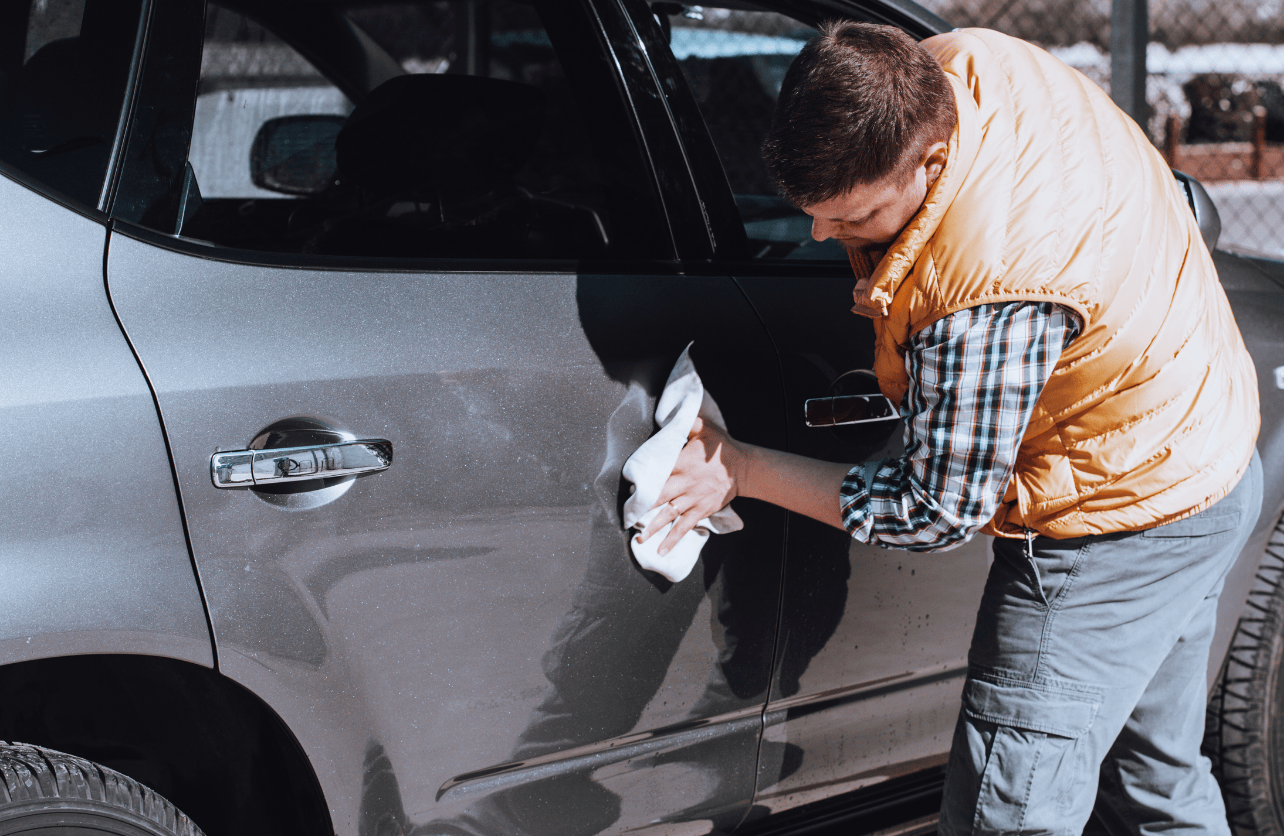How to Get Rid of Stubborn Decal Residue on Your Car

Removing a car decal is one thing, but dealing with the sticky, stubborn residue left behind can be even more frustrating. Whether it’s an old dealership sticker, a promotional decal, or a decorative vinyl graphic, adhesive residue can attract dirt, dull the paint, and leave an unsightly mark on your vehicle. Worse, improper removal techniques can result in scratches, discoloration, or damage to the clear coat.
If you’re struggling with leftover decal residue, don’t panic. With the right tools and techniques, you can remove it safely while keeping your car’s finish intact. This guide will walk you through the most effective ways to eliminate stubborn decal adhesive without harming the paint or glass.
Why Does Decal Residue Stick to Your Car?
Decal adhesives are designed to be strong enough to withstand weather, heat, and car washes, which is why they don’t always come off easily. Over time, exposure to the sun can cause the adhesive to harden and bond more deeply with the surface, making removal more difficult. Additionally, lower-quality vinyl decals tend to leave behind more residue than premium ones.
Understanding why the adhesive is sticking helps in selecting the right removal method. The key is to break down the adhesive without damaging the surface beneath it.
Step-by-Step Guide to Removing Stubborn Decal Residue
1. Soften the Residue with Heat
Heat is one of the safest and most effective ways to loosen adhesive residue before attempting removal.
- Use a hairdryer or heat gun on a low to medium setting and hold it about 6 inches away from the area.
- Move it in circular motions for about 30 to 60 seconds until the adhesive softens.
- Avoid excessive heat, as it can damage plastic trim or cause paint to bubble if left in one spot for too long.
Once the residue softens, you can begin lifting it with a plastic scraper or microfiber cloth.
2. Use an Adhesive Remover
If heat alone doesn’t do the trick, a dedicated adhesive remover can break down the residue further.
Best Adhesive Removers for Cars:
- Goo Gone Automotive – A car-safe formula designed specifically for adhesive removal.
- WD-40 – Works well on sticker residue, but should be washed off afterward.
- 3M Adhesive Remover – A professional-grade option that is highly effective.
- Rubbing Alcohol (Isopropyl Alcohol) – A budget-friendly alternative that dissolves adhesive residue safely.
How to Apply:
- Spray or apply a small amount of remover onto a microfiber cloth.
- Gently rub in circular motions over the residue.
- Let it sit for 30 seconds to 1 minute to break down the adhesive.
- Wipe away with a clean cloth and check for remaining residue.
Repeat if necessary, but avoid scrubbing too hard, especially on painted surfaces.
3. Try a Natural Alternative: Vinegar or Baking Soda
For those who prefer a chemical-free approach, vinegar and baking soda can help dissolve stubborn adhesive.
Vinegar Method:
- Soak a cloth in white vinegar and lay it over the residue for a few minutes.
- Wipe away the softened adhesive with gentle pressure.
Baking Soda Paste:
- Mix baking soda and water into a thick paste.
- Apply it to the area, let it sit for a minute or two, then gently wipe off.
These methods are effective but may require a little more effort compared to chemical removers.
4. Use an Eraser Wheel for Large Residue Areas
If you’re dealing with a large area of leftover adhesive, such as from a vinyl wrap or large decal, an eraser wheel may be the best solution.
What is an Eraser Wheel?
An eraser wheel is a rubberized wheel that attaches to a drill and safely removes adhesive without damaging the paint.
How to Use:
- Attach the eraser wheel to a drill set to a low speed.
- Gently press the wheel against the adhesive while moving in a circular motion.
- The rubber wheel will lift the residue, leaving behind a clean surface.
Eraser wheels are highly effective, but they should be used with caution—too much pressure or high speeds can generate heat and potentially damage the paint.
5. Wash and Protect the Area
Once the residue is fully removed, wash the area with soap and water to eliminate any leftover remover or residue.
- Dry the area completely with a microfiber towel.
- Apply a layer of car wax or polish to restore shine and provide protection against future discoloration.
This step helps ensure that the area blends in with the rest of the car’s surface, especially if the decal was on for a long time and prevented UV exposure.
What to Avoid When Removing Decal Residue
While it’s tempting to use quick fixes, some common DIY methods can actually damage your car. Here’s what not to do:
- Avoid razor blades or sharp objects – These can scratch paint and windows.
- Do not use acetone or nail polish remover – They can strip the car’s clear coat and damage plastic or rubber surfaces.
- Skip harsh scrubbing – Excessive force can dull or discolor the paint.
Instead, be patient and use the proper tools, allowing the adhesive remover or heat to do most of the work.
Final Thoughts
Getting rid of stubborn decal residue takes time, patience, and the right approach, but it’s entirely doable without damaging your car’s paint or glass.
The best removal method depends on how long the decal has been on the car—for fresh residue, heat, and a simple wipe-down may be enough, while older adhesive might require a specialized remover or an eraser wheel.
By following safe removal techniques and finishing with a proper wash and wax, you can restore your car’s clean, decal-free look without a trace of adhesive left behind.